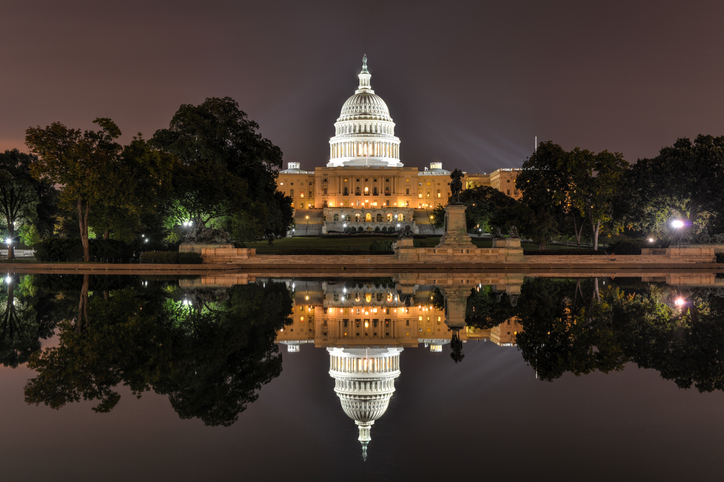On December 21, 2020, Congress passed a $900 billion COVID-19 relief package as part of the Bipartisan-Bicameral Omnibus COVID Relief Deal, a year-end spending bill expected to provide approximately $2.3 trillion in total stimulus funds. Among other provisions, the legislation includes additional Paycheck Protection Program (PPP) funding and guidance, extended unemployment assistance, and another round of recovery rebate payments to individuals. The bill is currently with President Trump to be signed into law.
PPP Provisions
One of the biggest wins in this round of legislation, a win that affects PPP loan recipients from the first round of PPP (PPP1) as well as the upcoming second round (PPP2), is that business expenses paid for with PPP loan proceeds are now tax deductible, making the program tax-free.
For PPP1 and PPP2 loan recipients, the legislation provides a simplified forgiveness process for recipients of loans of $150,000 or less, whereby a single page submission, including the number of employees retained, an estimate of amount spent on payroll, and the loan amount, will accompany your certification that you complied with the PPP program forgiveness requirements. All documentation surrounding your loan and expenses will still need to be retained, even if it is not required to be submitted to your PPP lending institution. If your PPP1 loan is $150,000 or less, you may want to wait for this bill to be enacted before you submit your forgiveness application.
The legislation redefines the covered period as between 8 and 24 weeks, as opposed to 8 or 24 weeks, which is important when relying on safe harbors. And, in addition to those expenses already deemed forgivable by previous guidance, the Act expands forgivable costs under both PPP1 and PPP2 to include:
- operating expenses relating to business software and cloud-computing services to facilitate business operations;
- expenses for property damages from public disturbances in 2020 that are not covered by insurance or other compensation;
- pursuant to contract, purchase order, or order in effect before the loan, supplier costs related to goods essential to operations at the time of expenditure;
- supplier costs related to perishable goods essential to operations before or during the covered period;
- group life, disability, vision and dental insurance as part of your payroll costs; and
- worker protection expenses and operating or capital expenditures to adapt your business, such as personal protective equipment (PPE), not including residential real property or intangible property.
These costs are not applicable if you received loan forgiveness prior to the enactment of the law. Additionally, PPP forgiveness will not be reduced by the amount of an EIDL loan, emergency EIDL grant, nor by inclusion of certain other loan repayment assistance in gross income.
The Act includes $284 billion in funding for the Small Business Administration (SBA) to provide loans through PPP2.
For those that have already received a PPP1 loan, PPP2 eligibility includes businesses with fewer than 300 employees with revenue loss of at least 25% in any calendar quarter of 2020 compared to the same quarter in 2019. You must have used all of your PPP1 funds prior to the beginning of the covered period of your PPP2 loan, but PPP1 forgiveness does not have to be received prior to applying for the PPP2 loan. In addition, businesses will need to certify that current economic uncertainty makes the loan request necessary to support operations.
If the loan is less than $150,000, you may be able to self-certify the need; however, the SBA has the right to audit the certification. If the loan is over $150,000, businesses will need to provide documentation of need before receiving the loan.
For those that have not already received a PPP loan, eligibility includes businesses with fewer than 500 employees. As with PPP1, your payroll expenses must be equal to at least 60% of the forgivable amount. Due to the $15 million allocated for grants to shuttered venue operators, these businesses are not eligible for PPP2.
Eligibility has been expanded to certain 501(c)6 organizations, including local chambers of commerce, economic development organizations, and tourism offices, if:
- no more than 15% of your revenue is derived from lobbying activities;
- lobbying does not account for more than 15% of your activities;
- your cost of lobbying doesn’t exceed $1 million; and
- you have no more than 300 employees.
In general, the maximum loan allowed under PPP2 is the lesser of:
- at the business’s election, the average total monthly payroll during the year prior to the loan date or calendar year 2019 multiplied by 2.5 OR
- $2 million.
For the purpose of this legislation, seasonal employers are defined as:
- those not operating for more than 7 months in any calendar year, OR
- those that, during the preceding calendar year, had gross receipts for any 6 months of that year that were not more than 33.33% of their gross receipts for the other 6 months of that year.
- For seasonal employers, the maximum loan allowed under PPP2 is the lesser of:
- at the business’s election, the average total monthly payroll for any 12-week period between February 15, 2019, and February 15, 2020, multiplied by 2.5 OR
- $2 million.
For the purpose of this legislation, new entities are defined as those that did not exist for one year prior to February 15, 2020. For new entities, the maximum loan allowed under PPP2 is the lesser of:
- the average monthly payroll for the period in existence multiplied by 2.5 OR
- $2 million.
For accommodation and food services, the maximum loan allowed under PPP2 is the lesser of:
- at the business’s election, the average total monthly payroll during one year prior to loan date or calendar year 2019 multiplied by 3.5 OR
- $2 million.
As previously stated, if you haven’t applied for PPP1 forgiveness, you may still apply for PPP2. Additionally, loan recipients will now be able to take advantage of the Employee Retention Tax Credit (ERTC), as long as those wages aren’t also claimed as forgivable costs. The Act also extends the ERTC through July 1, 2021, and increases the maximum for the refundable payroll tax credit to $14,000.
Unemployment Assistance Provisions
The Act includes $120 billion allocated for unemployment benefits and extends all pandemic unemployment insurance programs for 11 weeks past the expiration (set for the end of December), including a federal supplemental unemployment insurance benefit of $300 per week during that time.
Individual Recovery Rebates
The Act includes $166 billion for another round of direct payments to individuals. Each qualifying individual will receive $600, plus $600 per qualifying child, and there is no cap on household size. Eligibility is based on 2019 income, with value beginning to phase out at $75,000 for single filers, $112,500 for heads of household, and $150,000 for those married filing jointly, and fully phasing out at $87,000 for single filers with no qualifying dependents and $174,000 for those married filing jointly with no qualifying dependents.
Additional Provisions
The Act allocates an additional $20 billion for new economic injury disaster loan (EIDL) program grants for businesses in low-income communities.
Nearly $44 billion has been allocated for SBA debt relief payments, and $2 billion for SBA lending enhancements.
The legislation modifies 7(a) Loan Programs by increasing the loan guarantee on 7(a) loans to 90% until October 1, 2021. On January 1, 2021, the 504 Express Loan amount will increase to $1 million, and, on October 1, 2021, that amount will be permanently reduced to $500,000. For 504 Express Loans of $350,000 or less, the loan guarantee has been increased to 75% through October 1, 2021. Additionally, lender and borrower fees for the 7(a) and 504 loan programs have temporarily been waived.
For 2021 and 2022, the Act also increases the deduction for business meals to 100%.
The Act is extensive, so stay on the lookout as we release additional information in the coming days.
We’re here to help
ARB is dedicated to updating our clients and community as the legislative implications of the COVID-19 pandemic continue to unfold. Contact us if you have questions about this information or to find out more about our PPP consulting services.
Download our 13-Week Cash Flow Analysis tool and access our PPP Loan Forgiveness Workbook. Please also visit our COVID-19 Financial Resource and Tax Center for additional information on related matters.
by Holly Ferguson, CPA & Bart Haag, CPA





